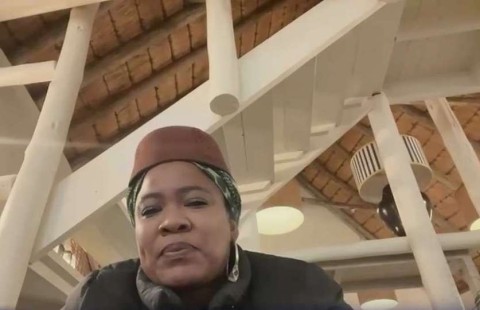India's Vande Bharat Express Redefines Rail Travel with High-Speed Connectivity, Boosting Economic Growth and Enhancing Comfort Across Bihar and Uttar Pradesh - Travel And Tour World
Saturday, June 21, 2025

India’s Vande Bharat Express is set to transform rail travel, offering a groundbreaking leap in speed, efficiency, and passenger comfort. By connecting key cities in Bihar and Uttar Pradesh, the new high-speed train significantly reduces travel time, cutting a journey that once took 10 to 12 hours down to just 7. This major infrastructural development not only promises to enhance connectivity but also fosters economic growth by improving access to trade, education, and healthcare. With advanced amenities like air-conditioned coaches, GPS systems, and onboard Wi-Fi, the Vande Bharat Express ensures a modern, safe, and comfortable travel experience, contributing to the government’s goal of upgrading India’s rail network and propelling the nation toward greater modernization.
Prime Minister Narendra Modi on Friday inaugurated the new Vande Bharat Express via video conferencing from Siwan, connecting Patliputra Junction in Patna to Gorakhpur Junction in Uttar Pradesh. This new addition marks a significant milestone in enhancing connectivity between the regions of eastern Uttar Pradesh and northern Bihar, providing a fast, safe, and convenient travel option for commuters.
The Vande Bharat Express will run on all days of the week, except for Saturdays. It departs from Gorakhpur at 5:40 AM, reaching Patliputra at 12:45 PM. On its return journey, the train leaves Patliputra at 3:30 PM and arrives in Gorakhpur at 10:30 PM. With its semi-high-speed capabilities, the Vande Bharat Express has drastically reduced the travel time between these two cities. The journey, which previously took 10 to 12 hours, can now be completed in just 7 hours.
The new train covers several important stations along its route, including Gorakhpur, Kaptanganj, and Paniyahwa in Uttar Pradesh, and Bagaha, Narkatiaganj, Bettiah, Sagauli, Bapudham Motihari, Muzaffarpur, Hajipur, and Patliputra in Bihar. This route offers better connectivity for a wide range of districts, benefiting regions like Patna, Vaishali, Muzaffarpur, East Champaran, West Champaran, Kushinagar, and Gorakhpur. Such improved transportation will not only enhance access to trade, tourism, and employment opportunities but also facilitate better access to education and healthcare services for people living in these areas.
Prime Minister Modi’s move to launch this high-speed train aligns with his overarching goal of fostering development in Eastern India. This project serves as an example of the government’s efforts to bring underdeveloped areas into the mainstream, improving the quality of life and opportunities for local populations. As a result of this new addition, Bihar now boasts 13 Vande Bharat trains, while Uttar Pradesh is home to 15, enhancing the rail infrastructure in both states.
The Vande Bharat Express offers several key amenities that set it apart from traditional trains. The coaches are air-conditioned, with automatic doors, bio-toilets, and a GPS information system. Additionally, the trains are equipped with onboard catering services, Wi-Fi, and CCTV security, providing a premium and comfortable travel experience. The inclusion of automatic doors and CCTV cameras ensures passenger safety, while the punctual schedules help passengers reach their destinations on time, making the Vande Bharat Express particularly beneficial for senior citizens, students, and women.
This new train is a key component of the government’s continuous initiative to upgrade and modernize India’s railway infrastructure.Currently, there are 71 Vande Bharat trains operating across the country, each contributing to faster, more efficient travel. Alongside the Vande Bharat Express, the Prime Minister has also recently introduced another Vande Bharat train to Jammu and Kashmir, guaranteeing continuous connectivity throughout the year for the region.These trains are a key part of the government’s vision for a modern and efficient national rail network.
In conjunction with the Vande Bharat Express launch, PM Modi also inaugurated a cutting-edge locomotive produced at the Marhowra Plant in Bihar, as part of the ‘Make in India’ initiative. This locomotive is intended for export to the Republic of Guinea, marking the first such export from the Marhowra factory. The locomotives are equipped with high-horsepower engines, advanced AC propulsion systems, microprocessor-based control systems, and ergonomic cab designs. They also feature regenerative braking technology, which makes them more energy-efficient and environmentally friendly.
To enhance regional rail connectivity, the Prime Minister also launched the new Vaishali-Deoria railway line project, with an investment of over Rs 400 crore. The new rail service on this route is expected to enhance connectivity between important regions in Bihar and Uttar Pradesh, boosting trade, travel, and regional development.
This launch of the Vande Bharat Express, the locomotive export, and the new railway infrastructure project are all part of the government’s broader push to modernize India’s rail network and improve connectivity in rural and underdeveloped areas. With cutting-edge technology, better safety features, and faster travel times, the Vande Bharat Express represents a major leap forward for India’s railway system, contributing to economic growth, improving accessibility, and improving the living standards of millions of individuals.
India’s Vande Bharat Express is revolutionizing rail travel by slashing travel times and enhancing connectivity between Bihar and Uttar Pradesh. This high-speed train offers cutting-edge amenities, boosting economic growth and providing a safer, more comfortable travel experience.
Prime Minister Modi’s vision for India’s railways is one of progress and development. The introduction of high-speed trains like the Vande Bharat Express, along with infrastructural investments in regions like Bihar and Uttar Pradesh, will continue to support the growth of both urban and rural communities. These efforts are shaping India’s rail network into one that will serve the needs of a growing population while also contributing to the country’s broader goals of modernization and sustainability.









